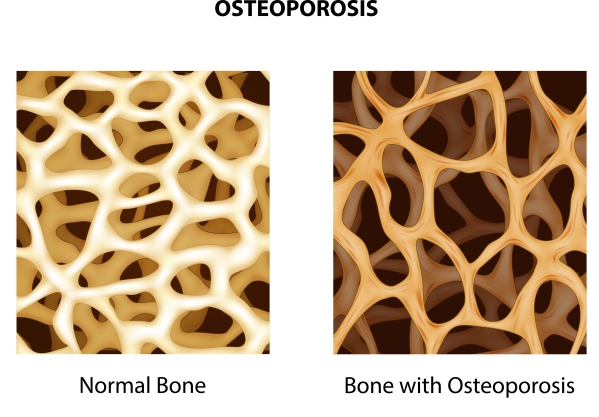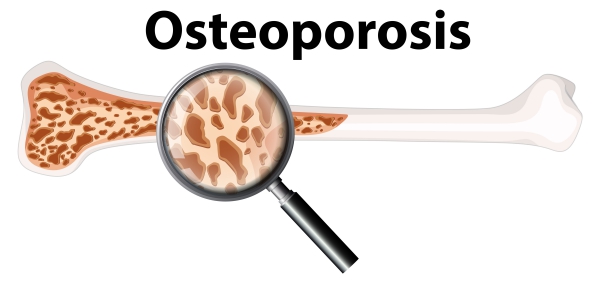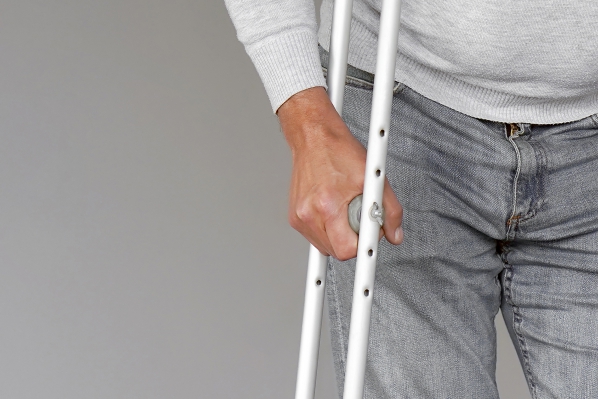Osteoporosis, Bone disorder, Weak bones, Fractures
Description : Osteoporosis is a disease which affects your bones, making them weak and brittle. Inside the bone,
Article Details :
What is osteoporosis?
Osteoporosis is a disease which affects your bones, making them weak and brittle. Inside the bone, there are honeycomb-like spaces which are enlarged in osteoporosis. This causes the bone to lose density and strength. In addition, falls or even mild stresses such as coughing and bending over can result in fractures. The most common fractures due to osteoporosis involve the rib, hip, wrist and spine.
Bone remodelling is a lifelong process whereby new bone tissue is formed and mature bone tissue is removed from the bone. In osteoporosis, there is a disturbance in this process leading to more removal of mature bone tissue- also known as bone resorption- than creation of new bone tissue. This makes the bone fragile and vulnerable to fractures.
In the United States alone, more than 10 million people were affected by osteoporosis above the age of 50 and 43 million had low bone mineral density in the year 2010, according to the National Osteoporosis Foundation (NOF). Osteoporosis can affect everyone but it occurs more in Caucasians and Asians. In addition, post-menopausal women are at very high risk of developing the disease. However, there are medications, weight-bearing exercises and lifestyle modifications which can help to strengthen weak bones and prevent bone loss.
What are the causes and risk factors of osteoporosis?
Bone remodelling plays a key role in the development of osteoporosis. However, there are other factors that can increase your risk of developing the disease, such as:
- Sex: Women are at increased your risk of developing osteoporosis due to hormonal changes that arises after menopause.
- Age: The risk of developing osteoporosis increases with age.
- Race: Being Caucasian or Asian has been associated with an increased predisposition to osteoporosis.
- Body frame size: People who have small body frames may have less bone mass to draw from as they age, hence increasing their risk of developing the disease.
- Family history: Having a parent of sibling affected by osteoporosis, increases your risk of having it.
- Sex hormones: The reduction of oestrogen release in post-menopausal women and testosterone in older men, increase their risk of developing osteoporosis. In addition, medications that lower your hormone levels can also contribute to the disease.
- Thyroid disorders: Excessive amount of thyroid hormones either due to thyroid disorders or medications can increase your of developing osteoporosis.
- Parathyroid and adrenal problems are associated with osteoporosis.
- Eating disorders: Being underweight and excessively restricting food intake weakens the bone.
- Low calcium intake: This contributes to reduced bone density, early bone loss and increased vulnerability to fractures.
- Gastrointestinal surgeries: Surgeries that are done for gastrointestinal disorders or weight management often limits the amount of surface area available to absorb nutrients such as calcium. This occurs as a result of reducing the size of the stomach or removing part of the intestines.
- Medications: Long-term use of corticosteroids such as cortisone and prednisone interferes with the bone remodelling process. In addition, drugs that are used in the management of diseases such as gastric reflux, organ transplant rejection, cancer or seizure are associated with osteoporosis.
- Medical conditions: Certain medical conditions are associated with osteoporosis, such as celiac disease, kidney or liver disease, inflammatory bowel disease, lupus, cancer, rheumatoid arthritis or multiple myeloma.
- Cigarette smoking: This contributes to the development of weak bones.
- Alcohol abuse: Excessive alcohol consumption increase your risk of developing osteoporosis.
- Sedentary lifestyle: Regular physical and weight-bearing exercises are beneficial for your bones. People who sit for long hours are at increased risk of developing the disease.
Symptoms of osteoporosis
Early stages of bone loss is often asymptomatic. However, as the disease progresses, your bone becomes weaker and weaker resulting in symptoms such as:
- Neck and back pain: either due to fractures or collapse of your vertebrae.
- A stooped posture
- Loss of height: usually due to a compression fracture in the vertebrae of the neck or back.
- A fragile bone that breaks too easily either as a result of a fall or a strong sneeze or cough.

Making diagnosis
The diagnosis of osteoporosis starts by a thorough history taking so that your doctor understand your symptoms better which is usually followed by a physical examination. Several tests can be performed to assess or diagnose osteoporosis, such as:
- Blood tests:
- Complete Blood Count (CBC): CBC is usually done to rule out anaemia as chronic anaemia predisposes you to bone Read more





